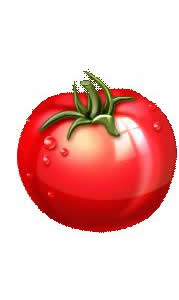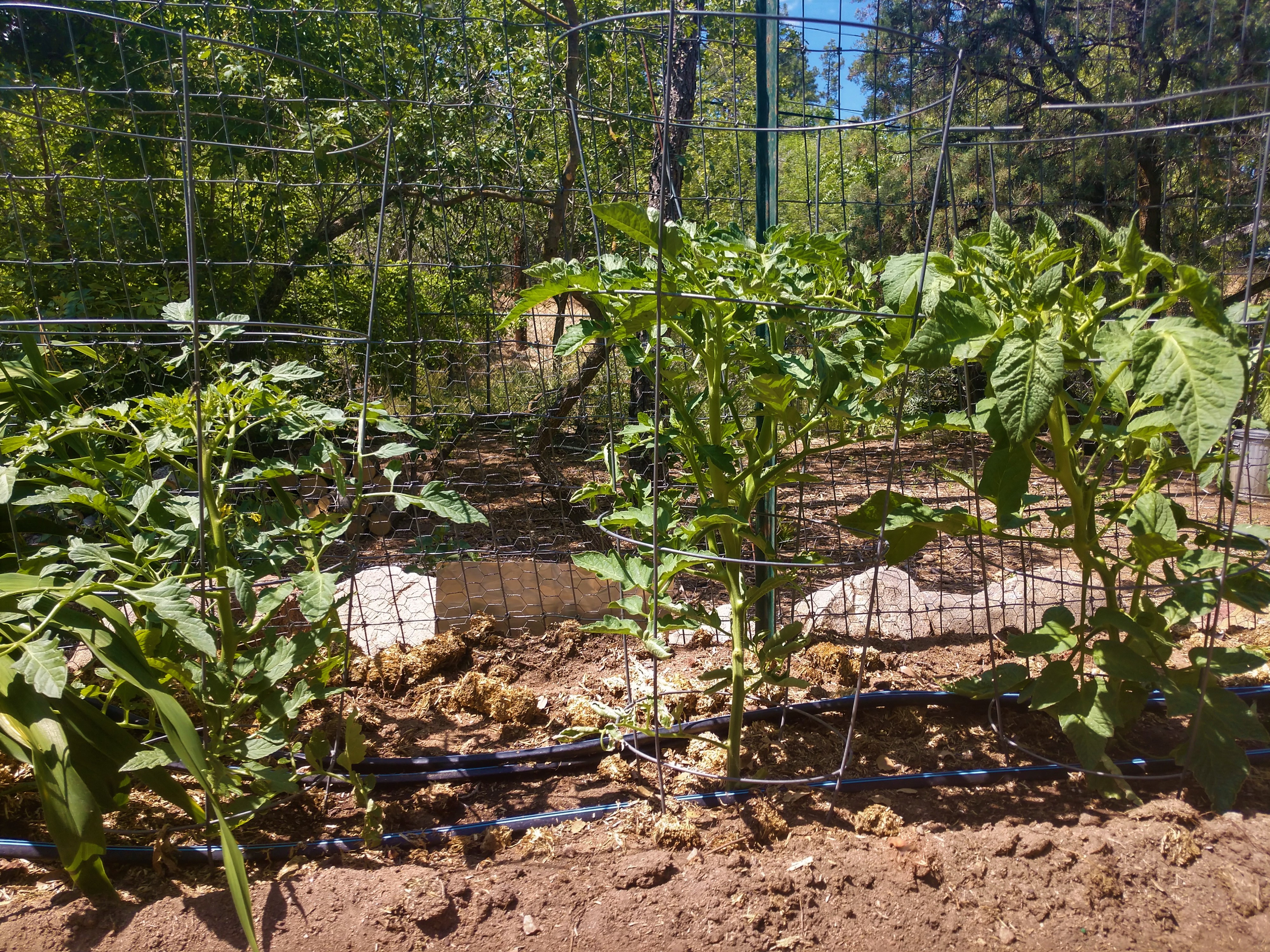 Tomato Growing Tips - June 10, 2020 Jeff Schalau, Agent, Agriculture & Natural Resources University of Arizona Cooperative Extension, Yavapai County Most home vegetable gardeners grow tomatoes. Sometimes, tomatoes are virtually the only thing small scale gardeners grow. If they are your only crop, you will want do everything possible to ensure a successful yield. Below are some science-based tomato growing tips. Plant tomatoes in full sun after the danger of frost. Tomatoes can be grown in pots and planters on patios and decks or in raised beds. This usually works relatively well the first year. However, there are drawbacks to doing this. Be aware this can lead to some disease problems and/or poor production when reusing artificial soil media over multiple years. When growing tomatoes in pots, you should thoroughly sanitize the container, replace the soil each year and select dwarf varieties (see the University of Illinois Tomato article below). Don’t be taken in by TV or magazine ads about the upside down tomatoes – these setups have many problems. With raised beds, the best solution is to have enough space to rotate crops and include 50% or more mineral soil in your beds. I prefer growing tomatoes in amended mineral soil and rotating my tomatoes (and other Nightshade family crops: peppers, eggplant, potatoes) such that it is three or four years between replanting them in the same spot. Crop rotation is most critical with these crops otherwise root and stem rots can become a problem. Many experienced vegetable gardeners grow their own tomato starts because the varieties available at garden centers are limited. This requires starting seeds in February and growing the plants under lights or in a greenhouse. The alternative is to purchase plants from nurseries, garden centers, or at the farmer’s market. Tomato plants fall into one of two types that affect ultimate plant height and cultural requirements. Tomatoes are described as “determinate” if they eventually form a flower cluster at the terminal growing point (the top of the plant), causing the plant to stop growing in height. Plants that never set terminal flower clusters, but only lateral ones and continue to grow taller during the growing season are described as “indeterminate”. Heirloom varieties are usually indeterminate. Tomatoes do not need to be staked or caged, but this practice allows more room for other crops in small gardens and keeps the fruit from rotting when in contact with the soil. Determinate tomato varieties can be staked with small cages. Indeterminate varieties tend to get very large (6 feet or more) and will require a more substantial staking and support. Tomato cages may be made from concrete-reinforcing wire, woven-wire stock fencing or various wooden designs. Choose designs that have holes large enough to allow fruit to be picked and removed without bruising. I use steel t-posts, scrap 2 x 2’s, small tree branches, and baling wire. Cages should be firmly anchored with stakes or steel posts to provide stability. Hail protection can be added by attaching fiberglass screen, floating row cover to the top of the cages – the all plastic type is easiest to work with. Indeterminate tomato plants are vines which can be pruned as they develop. Tomato pruning is the removal of small shoots (suckers) that join the main stem where each leaf is attached. Suckers would eventually begin to fruit, but pruning reduces competition between the suckers and the fruit. Pruning directs the energy into fruit production promoting larger and earlier fruit. Remove the shoots when they are three or four inches long (removal of larger suckers can damage the plant). Remove a sucker by grasping it between your thumb and second finger and bending it to the side until it breaks. Ideally, the plants should be pruned to leave two to three fruit producing branches: the main stem, the sucker that develops immediately below the first flower cluster, and potentially another sucker below that. Below, I have included a video of my Utah State Extension colleague, Ron Patterson, demonstrating tomato pruning. Watch for curly top virus early in the growing season (May and June) and remove infected plants as soon as they show signs of the disease. I have written about this disease in the past and it is linked below. Make sure you check out all this additional information if you like growing tomatoes! You can follow the Backyard Gardener on Twitter – use the link on the BYG website. If you have other gardening questions, email the Master Gardener Help Desk in Prescott (prescottmg@gmail.com) or Camp Verde (verdevalleymg@gmail.com) and be sure to include your name, location, and phone number. Find past Backyard Gardener columns or provide feedback at the Backyard Gardener web site: https://cals.arizona.edu/yavapai/anr/hort/byg/. Images  Young indeterminate tomato plants (Super Sweet 100, Pink Monserrat, and Brandy Boy L-R) in small cages in Prescott, Arizona. Larger trellises will be built to promote upward growth and save space (Jeff Schalau, University of Arizona).
Young indeterminate tomato plants (Super Sweet 100, Pink Monserrat, and Brandy Boy L-R) in small cages in Prescott, Arizona. Larger trellises will be built to promote upward growth and save space (Jeff Schalau, University of Arizona).Additional Resources Watch Your Garden Grow: Tomatoes University of Illinois Extension urbanext.illinois.edu/veggies/tomato.cfm Tomatoes in the Garden Utah State University Cooperative Extension extension.usu.edu/files/publications/factsheet/hg_2004-05.pdf Managing Curly Top Virus University of Arizona Cooperative Extension, Backyard Gardener Feb. 6, 2013 cals.arizona.edu/yavapai/anr/hort/byg/archive/curlytopvirus2017.html Video of Utah State University Cooperative Extension Agent, Ron Patterson, demostrating tomato pruning and greenhouse trellising (this trellising technique is not recommended for outdoor applications). |